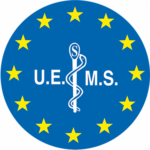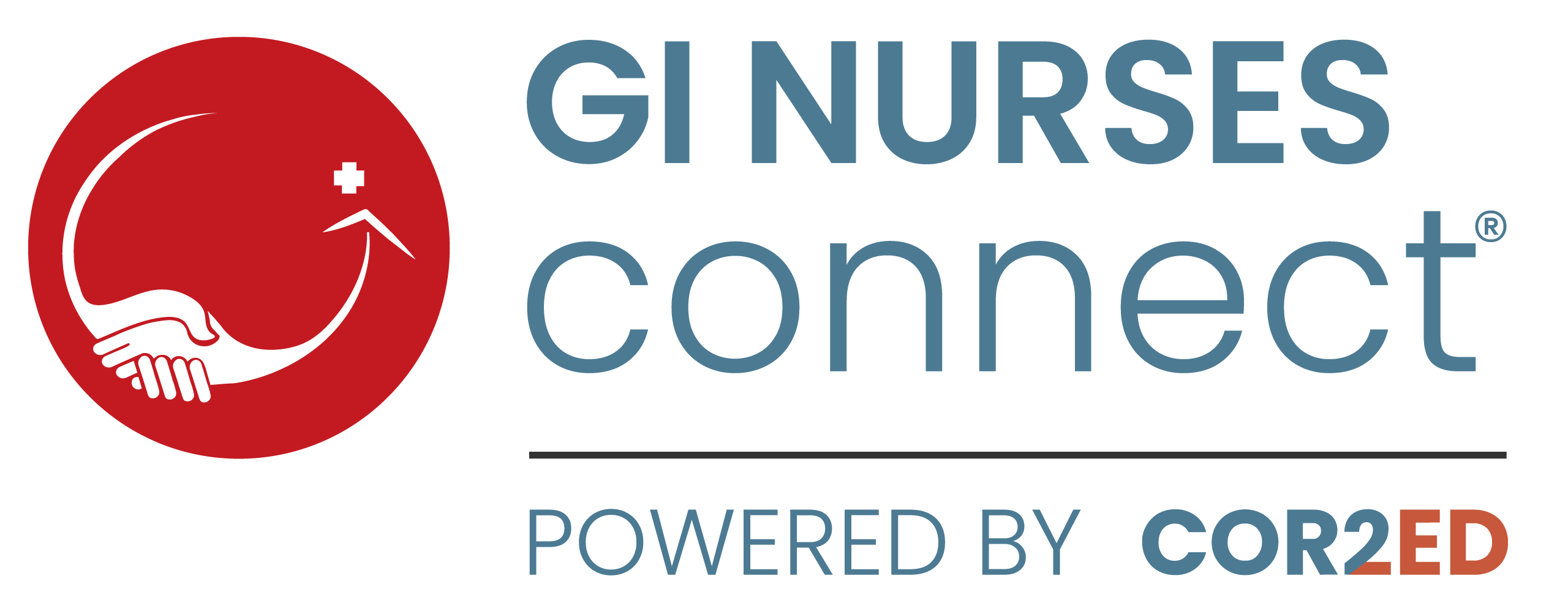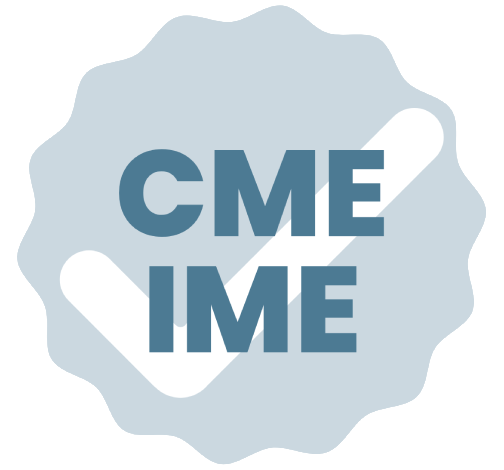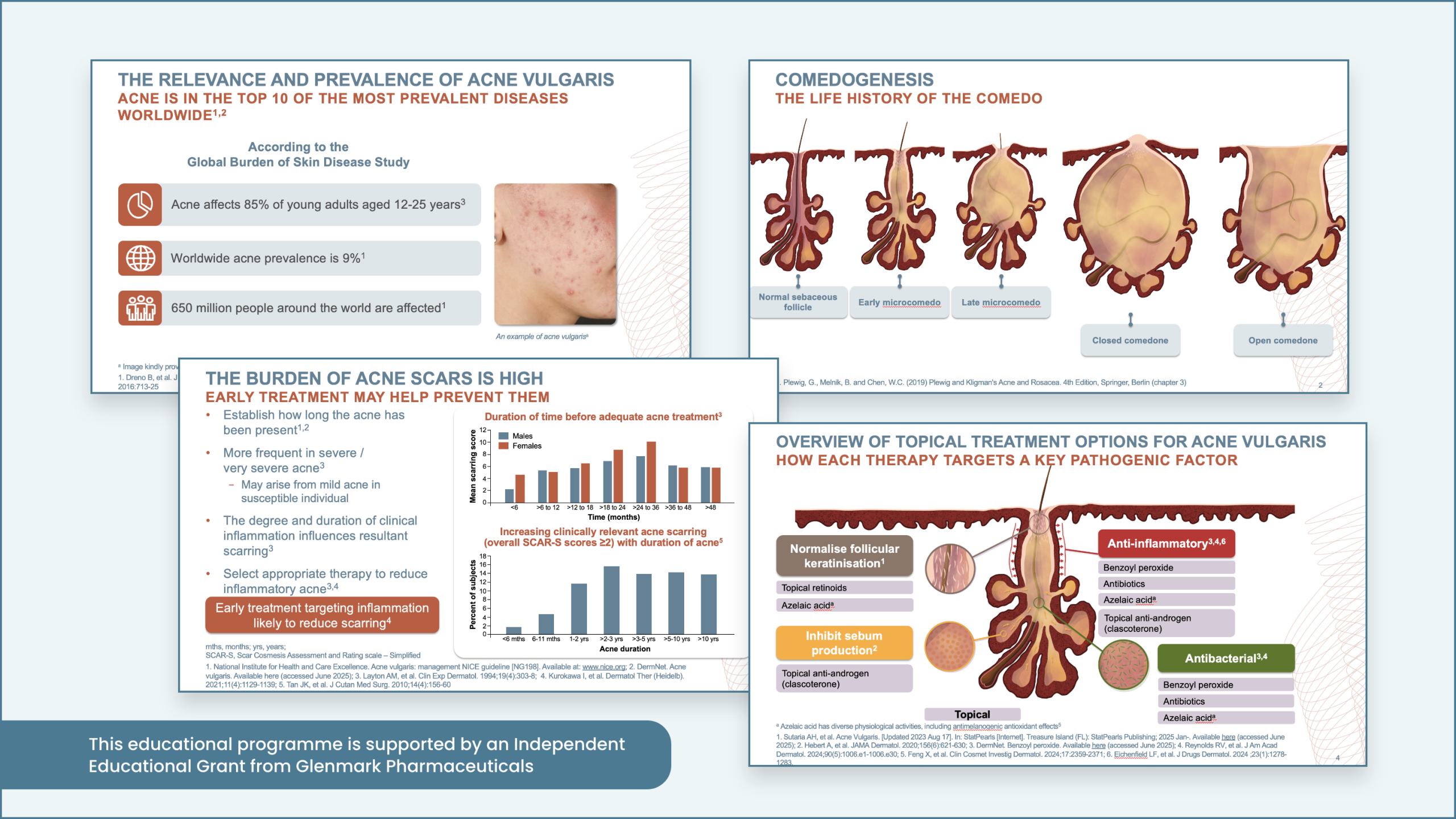Podcast: Management of Skin Toxicity with Multikinase Inhibitors
Please note:
GI NURSES CONNECT podcasts are designed to be heard. If you are able, we encourage you to listen to the audio, which includes emotion and emphasis that is not so easily understood from the words on the page. Transcripts are edited for readability. Please check the corresponding audio before quoting in print. This GI NURSES CONNECT programme is supported through an independent educational grant from Bayer and is an initiative of COR2ED. The views expressed within this podcast are the personal opinions of the authors. They do not necessarily represent the views of the author’s academic institution, or the rest of the GI CONNECT and GI NURSES CONNECT groups.
Transcript
Beth Wittmer
Hello, and welcome to this podcast on Management of Skin Toxicity with Multikinase Inhibitors. My name is Beth Wittmer and I'm a registered nurse.
I currently work at as the Director of Care Management for Florida Cancer Specialists and Research Institute in the United States and I'm also a member of the GI Nurses CONNECT.
I'm delighted to be joined today by Dr Hans Prenen who is a GI medical oncologist at the Antwerp University Hospital in Belgium, and also a member of our physician partner group GI CONNECT. Thanks for joining me today Hans.
Hans Prenen
Thank you Beth, it’s my pleasure to be here.
Beth Wittmer
So today we're going to discuss the management of dermatological side effects that patients may experience when receiving treatment with multikinase inhibitors.
These treatments are widely used to treat many solid tumours including GI tumours, but they are also associated with considerable skin toxicity which needs early intervention and management in order to help patients stay on optimal treatment and achieve the best outcomes, while still maintaining the patient's quality of life.
Hans, perhaps you can talk start by telling us which treatments, we are focusing on and taking us through some of the skin related reactions that we may encounter.
Hans Prenen
Sure Beth so, as you know, there are a number of multikinase inhibitors where we see skin toxicity side effects.
In general, I would say that almost all drugs interfering with signal transduction are associated with dermatologic adverse events.
Some examples are the EGFR inhibitors both the monoclonal antibodies but also the oral small molecules.
VEGF receptor inhibitors such as regorafenib, sunitinib, cabozantinib and of course many, many more.
And these dermatological side effects can lead to a decreased quality of life and also cause dose interruptions which might affect the clinical outcome.
And the main objective, then, is to effectively treat and manage side effects and to keep patients on the treatment, whilst maintaining reasonable quality of life.
Beth Wittmer
Exactly, thank you for that Hans. Perhaps we could start by discussing hand foot skin reactions?
I think it's worthwhile pointing out that these are different than hand foot syndrome, which is associated with chemotherapy. Perhaps you could tell us about how soon this tends to occur after starting treatment and how do you treat it?
Hans Prenen
It's a very good question, because actually many people don't know this, but hand foot skin reactions is the most common cutaneous adverse events caused by TKIs and indeed it's different than the hand foot syndrome, which is commonly seen if patients are, for example, treated with capecitabine.
While hand foot syndrome presents with diffuse painful oedema and also redness of the palms and the soles, hand foot skin reactions are characteristically localised areas of pressure or friction on the skin, for example, the heels, metatarsal heads etc. And it appears quite quickly, I would say, in the first two to four weeks of treatment with TKIs. And importantly it's dose dependent which means, sometimes with higher doses, you can see more skin effects and with lower doses. And usually, the lesions when you look at them, they begin as bullae or blisters and then they develop into some focal hyperkeratotic callus-like lesions on erythematous base.
So it's very important that you're able to grade it so that you know the grading because it guides the approach to the treatment.
If you look in your book, your CTCAE book, you will not find hand foot skin reaction as its own category.
But then you have to look for palmoplantar erythrodysesthesia (it's a complex term, I know, but I can't help it, it's like that in the book) and you can use this to grade hand foot skin reactions.
Just to summarise how you grade it in general, we say grade one is minimal skin changes, grade two are skin changes with pain and also interfering with daily activities. Grade three is severe skin changes with pain and also limiting self-care so that's how you can make the difference between two grades, if it interferes with your daily activities grade two, if you're limited self-care it's grade three.
And what are the general principles of the management? Of course, as we know, in oncology prevention is the most important one. And how can you prevent it? By using moisturising creams, and of course minimise friction and pressure. You can also wear thick cotton gloves and socks at night, so you have less friction. And once you have a grade one, so as soon as you see some skin changes, you can use some kind of keratolytic creams, for example, topical urea 10%.
But one message here is that you can still continue the anti-cancer agent, so it doesn't have to be stopped. As soon as it is a grade two I advise to use topical steroids. And in grade three I would hold the multikinase inhibitor for at least seven days or until there is a bit a better effect on the skin toxicity and then you can, for example, resume at a lower dose.
Also, one important message is don't forget to treat the pain, because often it is very painful, so you can use anti-inflammatory drugs, you can use topical lidocaine. Some people even need morphine to treat pain. And, of course, be alert for lesion infection.
I think it's also important to mention that some studies have looked into dose management to avoid skin toxicity and one good example is the ReDos study with regorafenib in patients with metastatic colorectal cancer, so these patients were randomised between different regorafenib dosing strategies so either you can use a dose escalation strategy where you start with a low dose, for example, 80 milligrams and then you go up until the maximum dose if well tolerated or you go immediately to the full dose. I think as soon as this study was published a lot of GI oncologist try to implement this and start with the low dose to 80 milligrams and then go higher and say go 120, for example.
If they tolerate well not too many skin toxicity, they can go to a higher dose, but I think this flexible dose regimen is something really innovative and novel as we've never done this before in any drug that we used in oncology.
Beth Wittmer
Excellent points Hans. Here, we would alert our providers of any grade changes, but would certainly bring them in on anything that's at or above a grade two so that immediate action can be taken as well.
Another common problem patients experience while receiving treatment with MKIs is rash. Can you just can you describe the different types of rash that a patient may develop and how would you manage that?
Hans Prenen
That's a difficult question as a non-dermatologist, but in my head, I see usually two types of rash, and then I would say, on one side, you have the acneiform rash or the papulopustular rash.
I think you all well know this as the rash that is happening when treated with EGFR inhibitors.
It typically begins within one/two weeks of treatment initiation, and it also gradually subsides over a few months so.
The lesions are typically on the face, scalp, chest and back, but usually not on the extremities, so this is important.
So what are the measures there? I think most people know it, but I will just summarise them.
I usually tell people when they have babies, they should treat their skin, as they would treat the skin of the baby so avoid frequent washing with hot water, aggressive soaps, excessive sun exposure and use a lot of moisturising cream. So these are preventive measures that can avoid a lot of skin toxicity.
Second, you can use oral antibiotics there's a big debate about this, whether we should use prophylactic or not with tetracyclines. For example, we use minocycline 100mg. We use prophylactic, but we can discuss for hours, I think about whether to use it up front, or as soon as you see symptoms, and as soon as you have a grade one I tend to use metronidazole cream locally. And if you go to grade two I administer a higher dose of minocycline, if not already used and grade three usually topical steroids.
My main message is that usually, when I tend to use steroids, I try to also ask the advice of a dermatologist if available.
I told you that I have two types of rash that it's in my mind, one is the acneiform rash, and the second one is the maculopapular rash.
This occurs very early, one to three weeks after treatment initiation and it's frequently dose dependent. And the incidence can be reduced in subsequent cycles so usually, the more you give of the drug the less you see this skin toxicity. Usually it's also tends to disappear without treatment in less than two months so it's not that bad and I think you only have to treat it with topical steroids when the patient complains that it’s itching or when it's too bad.
Again, the same rules: grade one just use, for example, something locally or menthol cream; grade two add steroids; grade three refer to dermatologist. So I think in general, the rules apply for any type of rash.
Beth Wittmer
Absolutely, and I think it's important to proactively educate patients, not to treat the rash at home as though it was acne.
Definitely, increase the use of moisturiser as opposed to drying up the rash with an acne treatment and, as you well know, and if left uncontrolled it may lead to an opportunistic infection in the lesions.
Patients can also present with dry skin, which is flaky, dull, scaly and itchy. What are your recommendations for managing this Hans?
Hans Prenen
Well there's a beautiful name for this, it's called xerosis or you can call it xerosis cutis.
And it often leads to itching, so the most of the complaints is itching because of the dry skin.
And it appears quite late, approximately two/three months after initiating treatment. But it's usually reversible and it generally doesn't require treatment discontinuation but a general measurement is use moisturising cream.
And maybe something for our listeners it is very important that once, a dermatologist told me, I asked the question ‘is the most expensive cream also the best one?’ and he said, this is completely not true. So the patient has to use the cream, which he likes so if he or she likes a certain cream, feels good, likes the perfume, whatever, that’s the cream he or she needs. So do not buy an expensive cream for moisturiser, so that's an important message.
Beth Wittmer
That's a great, great point. And Hans these treatments can affect the hair and the nails as well, in particular alopecia can significantly affect a patient emotionally and impairs their quality of life. How do you manage these side effects?
Hans Prenen
I fully agree, unfortunately, there is no good treatment for alopecia and, to date, there are also no specific pharmacological interventions that have demonstrated enough activity in randomised trials to justify the general use to prevent MKI associated alopecia. So the good thing is that it's a reversible, let's say two/three weeks after stop of the multikinase inhibitor.
But the only thing I can advise is don't be too aggressive with your hair, because some women ask, ‘okay, can I colour my hair?’ and we always advise not to do that, and once a hairdresser told me that it's a bit toxic for the hair. So everything that is not good for the hair, aggressive shampoos etc., it's also better to avoid once you want to avoid alopecia. But there's no fantastic drug for this.
The second thing are the nail changes and that's something I have to warn the listener, because that's usually a severe problem.
The best is to avoid, of course, and once you see this nail toxicity, you have to withhold your multikinase inhibitor treatment when necessary and I would advise to refer always to a dermatologist when you see this nail toxicity, because there are certain treatments like topical steroids, calcineurin inhibitors, anti-microbial soaks etc, but usually I refer them to the dermatologist because they are very difficult to treat.
Beth Wittmer
That makes sense, absolutely. So we also see that these treatments can cause adverse mucosal changes which can be very troublesome for patients as well.
Hans Prenen
Yes, the stomatitis, as you say, can be very unpleasant and they have symptoms of oral pain, dry mouth, dysaesthesia even, ulcers etc. And the mechanism, why this happens with multikinase inhibitors is actually unclear, but it may be related with poor healing of the micro trauma, especially when you use anti angiogenic agents.
And the treatment is mainly preventive. So if I can give one message to the listeners, I would say, rinse your mouth every time that you have eaten something, even if you eat something in between, rinse the mouth. And then people often ask ‘okay, should I rinse with water, should I rinse with sodium bicarbonate, should I rinse with whatever’ and then I usually tell them it doesn't matter as long as you rinse it that there is no food that stays in your mouth.
Also your mouth hygiene. See the dentist before starting treatment, but these are also the general rules that we tell our patients when we treat with chemotherapy to avoid oral mucositis.
Beth Wittmer
Excellent advice. Hans I'm interested to hear what your views are as to whether or not we should take a proactive or reactive approach to prescribing treatment for skin related adverse events.
Hans Prenen
Yes, we discussed already the proactive approach of giving minocycline, for example, for anti EGFR toxicity or using hydrating creams.
I'm a big fan of prevention in general. So I think prevention is always better than once you have problems and then you have to treat them. It's easier to prevent than to treat.
So I always give my patients also ready a prescription, as most drugs are oral and they go home and the skin tox starts, usually it's on the weekend, or when they cannot reach a doctor and then they have already all these things at home and I tell them if you have this kind of symptoms start with that etc. I think the best approach is the preventative approach.
Beth Wittmer
Very proactive, I like that. I know everyone may take a different approach in that regard and it's great for a patient to have easy and early access to topical treatments.
So Hans, are there any indicators that a patient may be at a higher risk of experiencing these skin related toxicities than others?
Hans Prenen
Well actually there is some data to suggest that these skin toxicities may indicate that the patient is responding.
So this is good news, because when you have patients that show skin toxicity, you can tell them, ‘okay it's a good sign’.
And we saw this with patients who are treated with an anti EGFR, both in lung, head and neck, colon cancer, but it's even described in papers when they were treated multi TKI inhibitor regorafenib. That the more skin tox that you had the more effective the drug. So this way you can maybe motivate the patients also to continue the treatment.
So Beth, maybe I can ask you a question as well? So now we've discussed the various skin related side effects the patient may experience. But what do you consider to be the role of the nurse versus the physician in helping the patient manage these?
Beth Wittmer
Sure, yeah I'd be happy to talk about that. The nurse role is primarily to support the patient and educate about the potential adverse events and it's also important to maintain a close relationship and open communication with that patient.
And this facilitates early detection of side effects and quick action to resolve them. And patients are generally more comfortable with reporting AEs to a nurse than a physician, I think it's mostly that they don't want to be a bother to their physician.
And for myself the company that I work for, we provide care management services, so our nurses, are in a community setting. They have remote contact with patients to discuss drug toxicities and also provide guidance on how to manage these AEs.
For our company each nurse is assigned to approximately 200 to 225 patients and currently they provide monthly touch points with the patient to check in with them. And their goal is to average about 10 to 15 patients a day, but we also strongly encourage those patients to call us at any time with concerns. And we provide 24-7 support with a nurse on call after hours and on the weekends and holidays.
And then we have connection directly with their physician. So if they are experiencing side effects that need managed, then we are able to get those answers that we need. And our nurses are also using clinical pathways to advise the patient regarding skin related side effects.
If something falls outside of the scope of care again the nurse connects with the medical oncologist or the nurse practitioner in our clinics that are in the Community, setting.
And it's also the goal that the nurse works with the oncologist for referrals to dermatology, if appropriate. The goal is to prevent the patient from unnecessary trips to the emergency room.
And a Nurse Navigator’s role in the US is really to be the conduit, to help collaborate the care needed.
In most countries outside of the US and UK the nurse is not able to manage dose adjustments or referrals to other supporting specialists, such as dermatologists themselves.
And I think it's important to note that the nurse has a key role in recognising certain drug related toxicities and knowing when to escalate these to the patient's oncologist or other members of the multi-disciplinary team.
So Hans, I'm interested to hear whether the physician and nurse work differently to this in Europe.
Hans Prenen
Maybe I can't speak for the whole of Europe, but I can speak about Belgium. We don't follow a specific schedule for following up to patients for adverse events.
We don't follow up proactively but patients usually contact a nurse when they experience issues. So we give a card to them with where it’s the contact info of the nurse, and as soon as they have some problems they can contact the nurse.
If the nurse feels that she or he is able to help the patient, there is no intervention of a doctor. But when the symptoms get worse, the nurse usually asks the approval of the oncologist to send the patients, for example, to the dermatologist. So she has a lot of freedom to do that, but there are no specific ways of arranging, and it can be different in one hospital to another one.
So you talked about the importance of educating the patients about these side effects Beth, but what routine skincare do you advise, usually that you provide patients to help prevent these adverse skin reactions?
Beth Wittmer
Yeah we advise on several key points like: avoiding topical products with fragrances or, most importantly, with alcohol in them; using mild soap and water for routine bathing; a cream based moisturiser; broad spectrum sunscreen with SPF of 30 or higher.
And for hand foot skin reactions: remove the calluses prior to treatment; making sure that their shoes fit well, they're not too tight; also using cotton or bamboo socks; and wearing gloves for housework and gardening.
And regarding mucositis or stomatitis. As you mentioned, good oral hygiene, using a soft toothbrush or a swab, saline mouthwash, you mentioned about rinsing after eating also very important. We also give tips like avoiding hot, spicy or acidic foods as these may exacerbate those symptoms.
And, lastly, to avoid biting their nails and avoid cutting them too short to help prevent nail reactions or infections.
We've had a great discussion today Hans. Perhaps you could summarise the key points for our listeners?
Hans Prenen
I think there are three key points. One, prevention is the best treatment. Two, explain the potential cutaneous side effects to your patients so how they can be recognised and when to contact your physician or nurse care. And three, closely collaborate with a dermatologist as these cutaneous side effects are very common phenomenon.
Beth Wittmer
Well thank you again Hans, and thanks to our listeners. We hope you found this discussion useful.






 Downloadable
Downloadable 







 10 MIN
10 MIN
 Jun 2025
Jun 2025 






